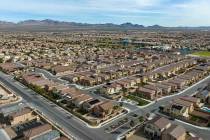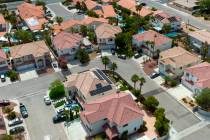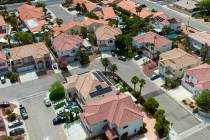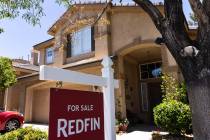30-year mortgage falls to record low 4.12 percent
WASHINGTON -- Mortgage rates have reached their lowest levels in six decades, making this the best time in most Americans' lives to buy or refinance a home. For people who qualify, today's rates could save thousands of dollars a year.
Yet half of would-be buyers say they will never save enough for the 20 percent down payment now usually required. And shrunken home values have erased much of the equity people need to refinance.
"Low rates are great, but the real issue is that the pool of people who can get a loan or refinance is small," said Greg McBride of Bankrate.com .
The average rate on a 30-year fixed mortgage fell to 4.12 percent this week. It's the lowest for a 30-year fixed loan since mortgage buyer Freddie Mac began tracking rates in 1971. The last time rates were cheaper was in 1951, when most long-term home loans lasted just 20 or 25 years.
The average rate on the 15-year fixed loan, a popular refinancing option, dropped to 3.33 percent this week. That also is an all-time low.
Record-low rates have done little to energize home sales. The average rate on the 30-year fixed loan has been below 5 percent for all but two weeks . Yet sales of previously occupied homes are on pace for their weakest year since 1997.
Too many would-be buyers can't come up with a down payment, don't have a job, lack enough income or are burdened by large debt loads.
Mortgage rates are low largely because investors are worried about the U.S. economy. As a result, they are moving their money out of stocks and into U.S. Treasury notes. Mortgage rates tend to track the yield on the 10-year Treasury note, which touched an all-time low this week.
A drop in mortgage rates could provide some help to the economy if more people could refinance. When people refinance at lower rates, they pay less interest on their loans and have more money to spend.
Consider homeowners who owe $250,000 and are paying 5.09 percent on 30-year fixed mortgages. That was the average rate on a 30-year fixed loan being offered in January 2010. Refinancing the loan at 4.12 percent could save them roughly $2,000 a year.
But many homeowners with good jobs and stable finances already have refinanced in the past year. The average rate on the 30-year fixed loan fell to 4.17 percent last November, and to 4.15 percent last month. Both were previous lows.
Homeowners typically pay a few thousand dollars in closing costs to refinance. To refinance again, rates would need to fall an additional 1 percentage point to make it worthwhile.
More than 75 percent of homeowners with a government-backed mortgage are paying rates above 5 percent.
Banks are insisting that applicants have higher credit scores and make 20 percent down payments if they are a first-time buyer.
Roughly 40 percent of U.S. households have the necessary credit scores above 700 to get a prime mortgage rate, according to an analysis of Fair Isaac Corp., or FICO, data. But just half of potential buyers say they can save enough for a down payment, particularly one as high as 20 percent, according to the National Foundation for Credit Counseling.
Another problem is that nearly a third of homeowners either have less than 5 percent equity in their home or are "underwater," that is, they owe more on their mortgage than their home is worth, according to the real estate research firm CoreLogic. That is particularly acute in Las Vegas, where many homeowners are underwater since home values tumbled 60 percent from their peak.
As a result, they can't afford a down payment on a bigger home and can't refinance because of lender-imposed limits and the cost of extra fees. The low rates now being offered don't include such fees, which many borrowers must pay to get the rates.
Those fees, known as points, make a mortgage rate, in effect, higher than it is advertised.
One point is equal to 1 percent of the loan amount. The average such fee for the 30-year loan held steady this week at 0.7 point. For the 15-year fixed loan and for five- and one-year adjustable-rate loans, the average fee was 0.6 point.

















